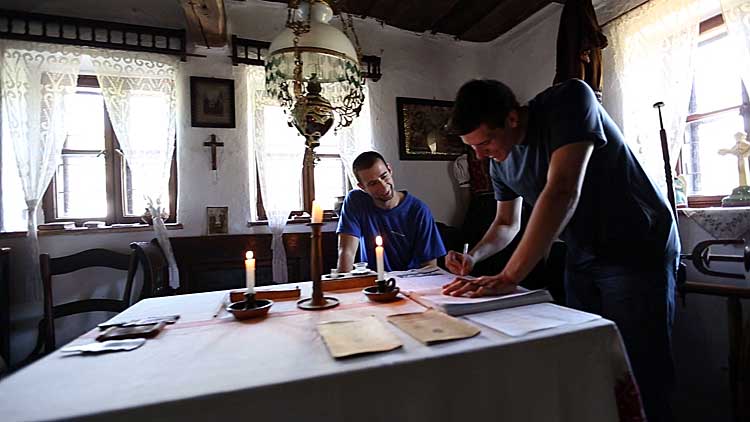 This 140-year old peasant house shows the past as a folk houseA 140-year old peasant house was turned into a folk house to show the living conditions of lackland Hungarian peasants. Most of the furniture has been acquired from collections so they can authentically present life at the end of the 9th and the beginning of the 10th century. The palóc traditional costume is also on display among the exhibits.
This 140-year old peasant house shows the past as a folk houseA 140-year old peasant house was turned into a folk house to show the living conditions of lackland Hungarian peasants. Most of the furniture has been acquired from collections so they can authentically present life at the end of the 9th and the beginning of the 10th century. The palóc traditional costume is also on display among the exhibits.
The house itself and the fence were built from stone – as nearly everything in Bogács – the stones were stuck together with mud.
The building is a nice representative of a typical three-roomed house of that time: the rooms – a bedroom, a kitchen and a pantry – are situated behind each other. The short end of the house faces the street, the only entrance opens into the central room called "pitvar" (another name for a kitchen), the other rooms open from this place. Only the pen had its own entrance.
Only one room was heated: the bedroom with a hard packed dirt floor. A beehive oven can be found here, its opening looked to the kitchen. This present beehive oven was renovated by Attila Dorogi, a local stonemason and ethnographer. The free chimney of this oven is much more modern than those of that time because it led smoke out of the house through itself so that it would not spread inside.
In the "pitvar", which served as a kitchen under the free chimney the oven can be seen, which is the opening of the beehive oven, or rather the ledge in front of it. The oven was not only used for baking bread or cakes, roasting sausages or meat but also for cooking: usually they cooked beans, peas, lentil and sweetcorn, and even dried fruit in it.
The most important storage space was the pantry mainly used for storing cereals, flour, bran, bacon, sausages and other food.
In the bedroom only one bed can be seen. The husbandman and his wife slept in it, the other members of the family slept on a bench or in the corner of the beehive oven or on the floor on straw or a straw mattress. Women and girls slept in the pantry even in winter.
The pen was attached to the house but it had its own door. Goats were kept there because they didn't need beasts of burden as they didn't have any land to cultivate. But they needed goats to provide them with milk and dairy products. In the goat pen visitors can see an exhibition of old tools, utensils of utilizing hemp, mining stones, stonemasonry, and other wooden tools.
Opening Hours:
15. 06–30. 08. Tuesday–Saturday: 14:00–18:00 pm
Sunday–Monday: closed
01. 09–14. 06. pre-arrangement is necessary. (Phone: +36 49/534-011)
Address: 7 Szomolyai Street
Phone: +36 49/534-011
Admission fee: 400 Ft / adults, 200 Ft / children (6-14 yrs.) and seniors





